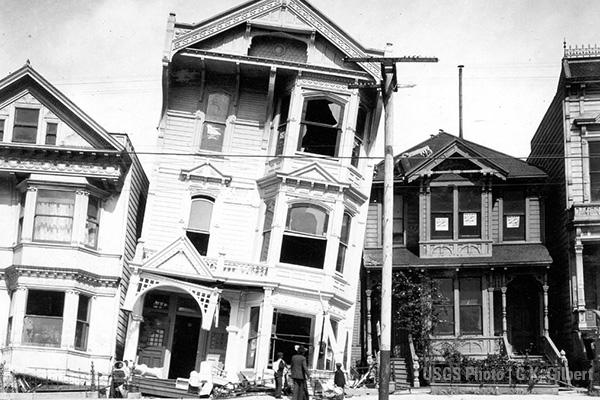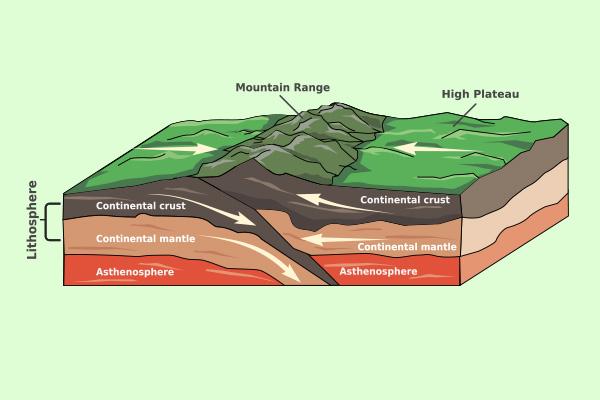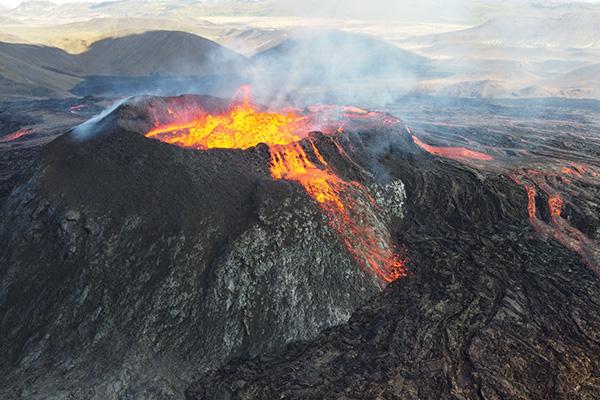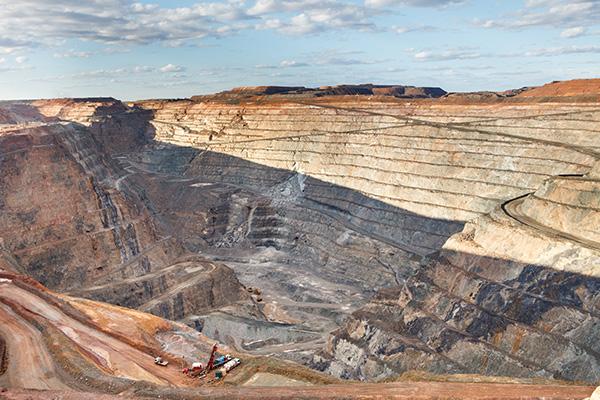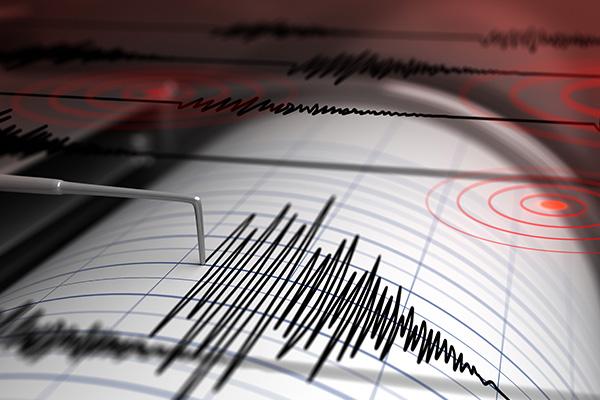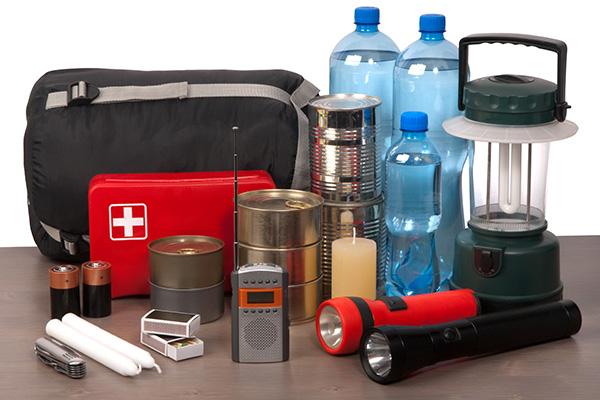Understanding What Causes Earthquakes
Usually, earthquakes occur because of plate tectonics, which is the scientific term used to describe the movement of the Earth’s crust. In this article, we’ll explain everything you need to know about what causes earthquakes, what an earthquake actually is, and whether or not earthquakes can be predicted.
What is an Earthquake?
According to NASA, earthquakes are an “intense shaking of Earth’s surface…caused by movements in Earth’s outermost layer.” Earthquakes can range in size from very small, barely noticeable tremors to massive events that can level cities.
Some of the “most significant earthquakes of all time” have happened right here in The Golden State, including the famous 1906 San Francisco Earthquake, which recorded a magnitude of 7.8 and may have killed as many as 3,000 people. And while it may seem like massive earthquakes are a thing of the past, they still happen regularly in California. In fact, nearly half (7 of 15) of the state’s largest earthquakes ever have occurred since 1980!
Where Do Earthquakes Happen?
Earthquakes usually start along fault lines within the Earth’s crust. The crust along these lines is relatively thin compared to other layers of the Earth and is made of two types of plates, continental plates and oceanic plates. Earthquakes are especially common along very active plate boundaries, like The Pacific Ring of Fire, which encircles the Pacific Ocean and runs right through California.
Tectonic Plate Movements and Earthquakes
To understand the causes of earthquakes, we first need to explain the basics of plate tectonic theory. The areas where tectonic plates meet are called “plate boundaries” or “faults.” These play an important role in generating earthquakes.
At these boundaries, the plates may collide, slip, or spread past each other. As the American Museum of Natural History explains, when this occurs they get stuck and the pressure builds up. Finally, the pressure between the plates is so great that they break loose and release energy in the form of seismic waves that shake the ground and cause earthquakes.
What are Plate Tectonics & Plate Boundaries?
Plate tectonics is a scientific theory that explains the movement and interaction of large pieces of a part of the Earth called the lithosphere. The lithosphere is made up of the Earth’s crust and the top layer of the Earth’s mantle (which is just below the crust). It is divided into several plates that fit together like a jigsaw puzzle. We call these “puzzle pieces” tectonic plates.
The Earth’s tectonic plates float on a deeper, semi-fluid layer of the mantle, and are constantly in motion because of the heat generated within the Earth’s core. This heat moves through the mantle and creates currents that push the plates around.
We call the areas where the plates meet plate boundaries. There are three different types of plate boundaries, including:
- Convergent Boundaries: These happen when two plates collide or move towards each other and the intense pressure and friction at convergent boundaries can lead to the formation of mountains, volcanic activity, and powerful earthquakes. About 80% of all earthquakes happen at convergent boundaries.
- Divergent Boundaries: These happen when two plates move away from each other, creating a gap, which can lead to volcanic activity, and occasionally, earthquakes.
- Transform Boundaries: These happen when two plates slide past each other horizontally and can generate powerful earthquakes due to friction and stress along the fault, like along California’s San Andreas fault.
While plate boundaries can be dangerous places due to the threat of earthquakes, they’re also capable of forming incredibly cool landscapes, including some of the country’s most stunning views contained in many of America’s national parks.
Fault Lines: Where Tectonic Borders Collide
Faults are breaks in the Earth’s crust where plates meet. Also called plate boundaries, the three main types of faults are normal faults, reverse faults, and strike-slip faults. Check out our blog on What is a Fault to learn more about the different types of faults.
What are the Different Types of Earthquake Waves?
Earthquakes generate several types of seismic waves. The three main types of earthquake waves are P-waves, S-waves, and surface waves. Check out our blog on How Earthquakes Cause Damage and Destruction to learn more about the different types of earthquake waves.
Can Volcanoes Cause Earthquakes?
Volcanoes sometimes cause earthquakes, and this happens frequently at California’s own Lassen Volcanic National Park. In fact, according to the USGS, “Volcanic earthquakes are common at Lassen, although most are too small to be felt.”
During volcanic eruptions, the movement of underground lava beneath the Earth's surface can cause earthquakes by creating changes in pressure and fracturing rocks.
Volcanic-caused earthquakes can take different forms, including volcano-tectonic earthquakes which are caused by magma movement and stress on rocks, as well as long-period earthquakes and harmonic tremors, which are linked with fluid movement that occurs within the volcano itself.
Human Activities and Induced Seismicity
Human-induced earthquakes, also known as induced seismicity, refer to earthquakes that are triggered or influenced by human activities rather than natural geological processes. These activities can alter the stress and pressure conditions within the Earth's crust, leading to the occurrence of seismic events.
While most induced earthquakes are of lower magnitude compared to natural earthquakes, they can still have significant implications for nearby communities and the environment. Some activities that may cause induced seismicity include mining, fracking, and the creation of dams or reservoirs.
Mining Operations
Deep mining operations, especially in areas with significant geological stress, can lead to the creation of fractures and shifts in the Earth's crust. These changes can trigger seismic events.
Hydraulic Fracturing (Fracking):
The USGS explains that “Reports of hydraulic fracturing causing felt earthquakes are extremely rare.” With that said, fracking involves injecting fluids at high pressure into underground rock formations to release natural gas and oil, and this process can create new fractures in the rock or reactivate existing ones, potentially causing small earthquakes.
Wastewater Disposal Wells:
Wastewater disposal wells are used to store wastewater from the oil and gas industry, including waters that were mixed with oil and gas and water used for fracking. According to the USGS, disposal wells are more likely to cause earthquakes than fracking.
Reservoir Induced Seismicity:
An article from Scientific American explains that the construction of large dams and reservoirs can change the stress and pressure in the Earth's crust, leading to earthquakes by “moving mass around on Earth’s surface in ways that can nudge already-stressed faults.”
Why Does the Ground Shake During an Earthquake?
According to the USGS, “ground shaking is a term used to describe the vibration of the ground during an earthquake,” which occurs due to seismic waves. When rocks along a fault line slip or break, stored energy is released, causing these waves to move through the Earth’s crust. These waves transfer energy from the rocks along the fault into and through the ground of the Earth, causing vibrations and shaking.
How are Earthquakes Measured?
Earthquakes are measured using two different systems: magnitude and intensity.
Magnitude measures the size of an earthquake by the amount of energy it releases. Magnitude is determined using seismographs that record ground motion. When it comes to earthquakes, many people have heard of the Richter Scale, but most modern scientists tend to measure earthquake magnitude using the Moment Magnitude Scale.
Intensity, on the other hand, measures the effects of an earthquake on humans, structures, and the Earth's surface, offering a subjective way to understand an earthquake’s impact. The Modified Mercalli (MM) Intensity Scale is used to measure earthquake intensity in the US.
How to Keep Yourself & Your Family Safe from Earthquakes
To keep your family safe and protect your home from earthquake damage, we suggest making an earthquake preparedness plan.
Your earthquake preparedness plan should include making an earthquake emergency kit, reading about earthquake safety tips, and getting an earthquake retrofit, especially if you live in an older home that’s on or near an active fault line.
Be sure to view the California earthquake probabilities map to understand just how much risk your family faces. And please remember that the best time to prepare for an earthquake is well before the ground starts to shake.
Remember – earthquake preparedness saves lives! Visit our blog for tips, advice and more information about earthquakes.

